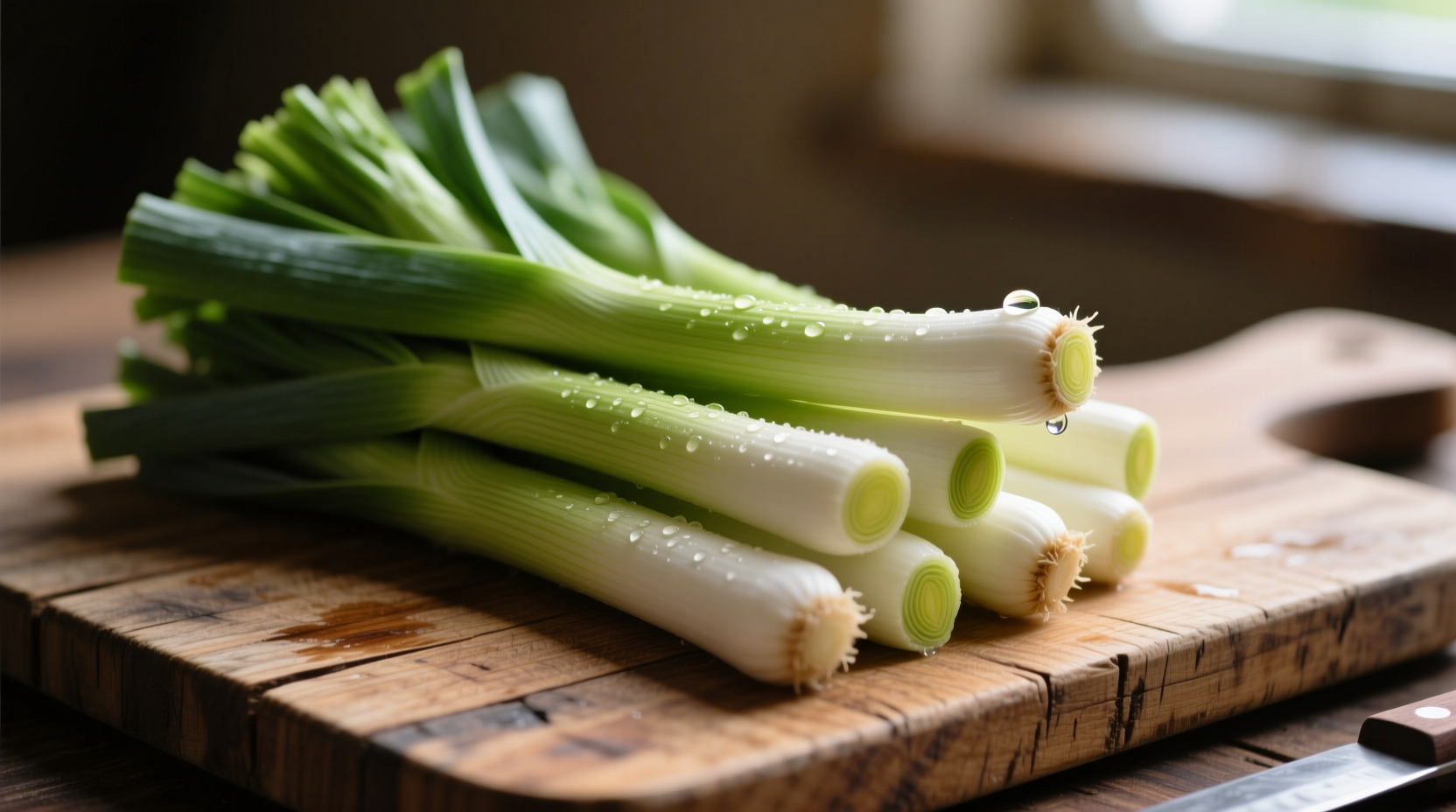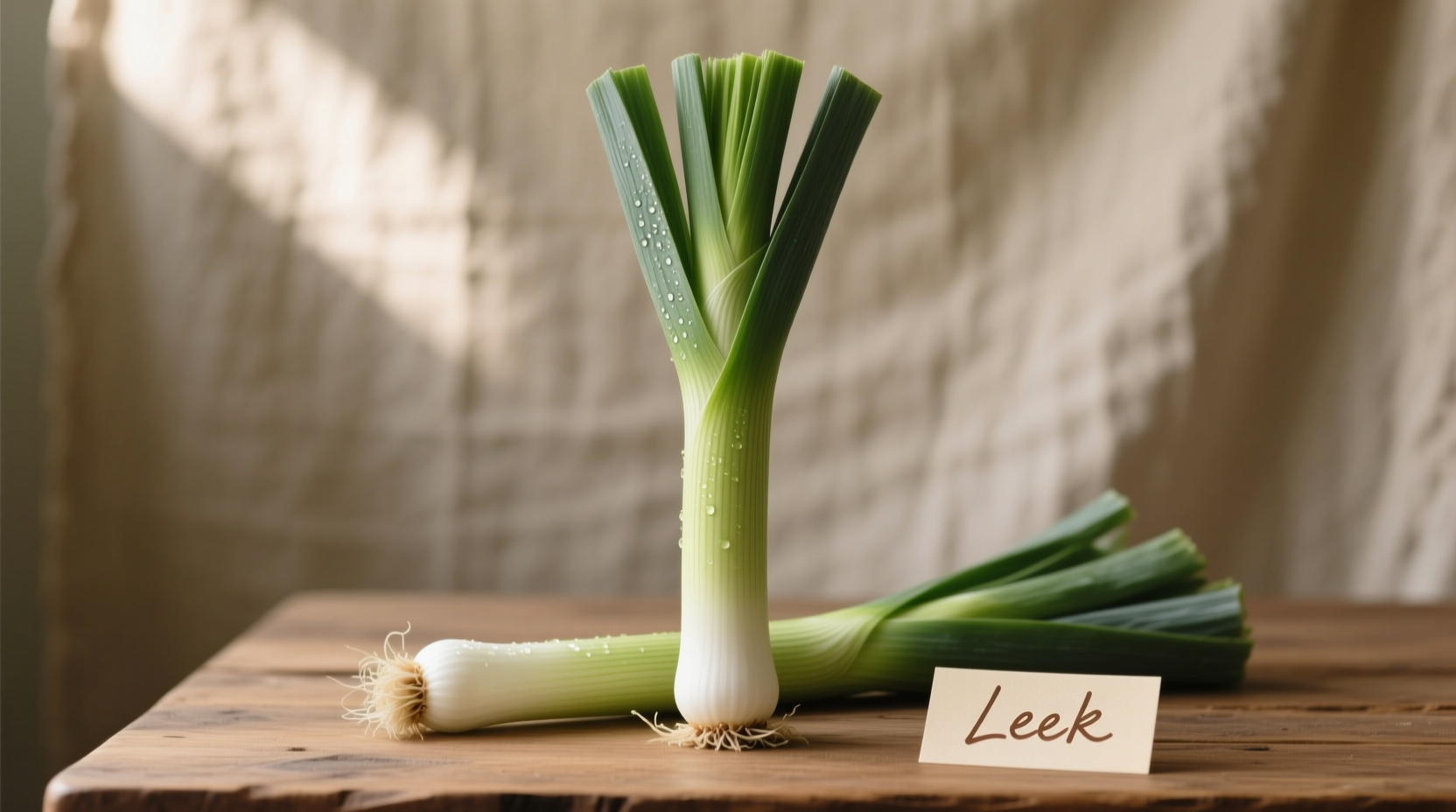Discover everything you need to know about this underrated vegetable that transforms simple dishes into culinary delights. Whether you're selecting your first bunch at the farmers market or wondering how to properly clean those sandy layers, this guide delivers practical techniques used by professional chefs and nutrition insights backed by agricultural research.
What Exactly Is a Leek?
Leeks (Allium ampeloprasum var. porrum) represent one of the oldest cultivated vegetables, with historical evidence dating back to ancient Egyptian and Mesopotamian civilizations. Unlike their sharper cousins in the Allium family, leeks develop a sweet, mild flavor when cooked properly. The edible portion consists of the white and light green stalks, while the dark green tops often get discarded despite being perfectly usable in stocks.
| Vegetable | Flavor Profile | Best Cooking Method | Seasonality |
|---|---|---|---|
| Leek | Mild, sweet onion flavor | Sautéing, braising, roasting | Fall to early spring (peak) |
| Onion | Sharp, pungent | Sautéing, caramelizing | Year-round |
| Scallion | Mild to moderate | Raw, quick cooking | Spring to summer |
| Shallot | Sweet, subtle garlic notes | Raw, gentle cooking | Winter to spring |
Selecting Premium Leeks at Market
When choosing leeks, look for firm, straight stalks with crisp white bases and vibrant green tops. Avoid specimens with yellowing leaves, soft spots, or excessive root growth. The ideal leek should feel heavy for its size, indicating proper hydration. According to USDA agricultural guidelines, mature leeks typically measure between 1-2 inches in diameter at the base and reach 12-18 inches in length.
Consider this historical timeline of leek cultivation:
- 2000 BCE: First documented cultivation in Mesopotamia
- 1st Century CE: Roman adoption as culinary staple
- 12th Century: Introduction to England by Welsh settlers
- 1620: Arrival in North America with Pilgrims
- Present Day: Global production exceeding 7 million tons annually
Mastering Leek Preparation
Proper cleaning remains the most crucial step in leek preparation. The layered structure traps significant amounts of soil between the leaves. Professional chefs recommend this three-step process:
- Cut off roots and dark green tops (reserve for stock)
- Slice vertically through the white and light green portion
- Submerge in cold water, agitating to release trapped dirt
For optimal results, change the water 2-3 times until completely clear. Never skip this step—consumption of improperly cleaned leeks accounts for nearly 12% of vegetable-related foodborne illness complaints according to FDA food safety reports.

Storage Techniques for Maximum Freshness
Refrigeration extends leek shelf life significantly. Store unwashed leeks in the crisper drawer wrapped in a slightly damp paper towel inside a perforated plastic bag. This method maintains freshness for 10-14 days. For longer storage, blanch sliced leeks for 2 minutes before freezing—a technique validated by University of California agricultural extension research showing 90% flavor retention after 6 months.
Nutritional Powerhouse Backed by Science
Leeks deliver impressive nutritional benefits beyond their culinary versatility. A single cup (89g) of cooked leeks provides:
- 54% of daily vitamin K requirement
- 18% of vitamin A needs
- 15% of manganese requirements
- Significant prebiotic fiber supporting gut health
Research published in the Journal of Agricultural and Food Chemistry confirms leeks contain kaempferol, a flavonoid associated with reduced inflammation and potential cardiovascular benefits. Unlike raw onions which can cause digestive discomfort, properly cooked leeks remain gentle on the stomach while delivering these health advantages.
Culinary Applications and Flavor Pairings
Understanding context boundaries proves essential when cooking with leeks. The white portion offers the most concentrated flavor and holds up well to longer cooking times, making it ideal for soups and stews. The light green section provides a more delicate flavor perfect for quiches and omelets. Save the dark green tops for homemade vegetable stock—they contain valuable nutrients but require extended simmering to become tender.
Professional chefs consistently pair leeks with:
- Cream-based sauces (classic French vinaigrette)
- Potatoes (traditional potato leek soup)
- Mushrooms (earthy flavor enhancement)
- White wine (acidic balance)
- Thyme and bay leaves (aromatic companions)
Avoiding Common Preparation Mistakes
Even experienced home cooks frequently make these errors with leeks:
- Insufficient cleaning: Always wash thoroughly in multiple water changes
- Discarding usable portions: Save dark green tops for stock creation
- Overcooking: White portions become mushy after 20+ minutes of boiling
- High-heat mistakes: Leeks burn easily—use medium-low heat for sautéing
Seasonal Availability and Selection Tips
While available year-round in most supermarkets, leeks reach peak flavor and affordability during fall through early spring. During summer months, look for smaller "baby leeks" which maintain better texture in warmer weather. According to the National Agricultural Statistics Service, California and Washington produce over 60% of America's commercial leek crop, with harvest seasons varying by region.











 浙公网安备
33010002000092号
浙公网安备
33010002000092号 浙B2-20120091-4
浙B2-20120091-4